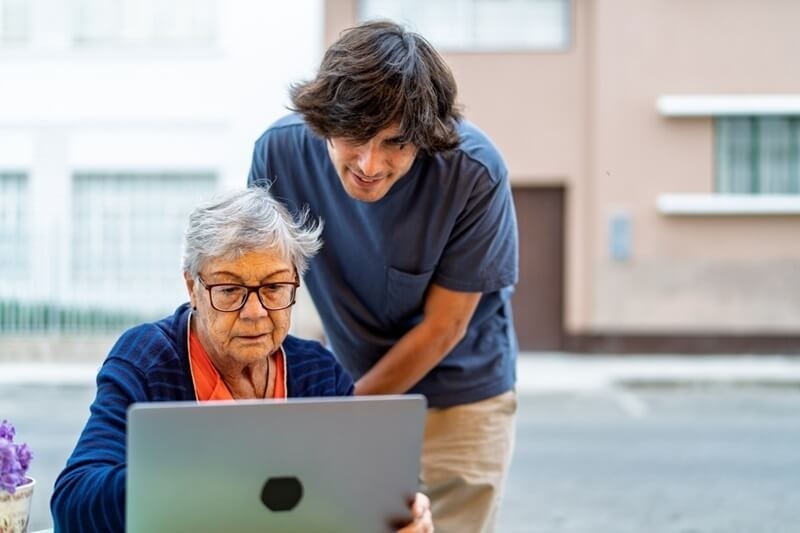
Think about it for a second — we live in a world where kids are scrolling TikTok at lightning speed while seniors are sitting at home wondering why phones don’t come with proper instruction manuals anymore. Both groups are living full lives, yet their worlds rarely collide in meaningful ways. That gap isn’t just about tech, it’s about understanding, belonging, and community.
This is where intergenerational learning comes in. It’s not just some academic buzzword — it’s a real way of bringing younger and older generations together to share skills, stories, and perspectives. The best part? Everyone involved benefits. And when communities invest in structured setups, often called an intergenerational learning programme, it does more than help individuals. It strengthens something bigger: social cohesion.
So, what is intergenerational learning exactly?
At its core, it’s pretty simple: two or more generations learn with and from each other. Not in the old “grandparent lectures the grandkid” way, but in a more balanced exchange. For example:
That’s intergenerational learning. It’s messy, it’s human, and it’s deeply impactful.
When you formalize this into an intergenerational learning programme, it gets even better.
Must Read: Basic Tech Skills Every Seniors Need to Learn

Now let’s tackle the bigger buzzword: social cohesion. What does it even mean?
The way cohesion social is defined (which is just another way of saying "define social cohesion") is, in essence, the stick keeping society together. It is the mutual perception of trust, respect, and belonging between people of different age groups, backgrounds, or life stages. Strong cohesion social increases cooperation between people, strengthens community feelings of safety, and makes people feel like they matter; weak social cohesion increases isolation, ageism, and "us vs. them" attitudes.
Here’s where intergenerational learning links in. A good intergenerational learning programmed isn’t just about helping one group — it naturally builds social cohesion.
You might think young people don’t need much from seniors — after all, kids today can Google anything. But human wisdom doesn’t show up in a search engine.
Youth involved in intergenerational learning often:
In short, these programmes give youth something algorithms can’t — perspective and belonging.
On the flip side, seniors aren’t just “giving” — they’re receiving just as much. Being part of an intergenerational learning programme often means:
It’s not about charity; it’s about exchange. Seniors get just as much energy, curiosity, and joy from these interactions as youth do.
Explore more: Unlocking Mental Clarity: 10 Surprising benefits of Journaling
Let’s zoom out. Why does this matter for communities as a whole? Because every successful intergenerational learning programme contributes directly to social cohesion.
Here’s how:
When you look at it that way, intergenerational learning is more than just education — it’s community repair. It actively creates the conditions where cohesion social is possible.
Not every intergenerational idea works out. You can’t just toss kids and seniors in a room and expect magic. For an intergenerational learning programme to succeed, a few ingredients matter:
When these elements align, programmes don’t just succeed — they thrive.
Each of these models doesn’t just teach skills — they strengthen the threads of belonging, making social cohesion tangible.
It would be dishonest to pretend it’s all smooth sailing. Running an intergenerational learning programme comes with hurdles:
But none of these are dealbreakers. With thoughtful design — like offering virtual options, building strong community partnerships, and setting clear expectations — these challenges can be managed.
Here’s the bottom line: intergenerational learning isn’t a feel-good side project. It’s a real tool for addressing one of society’s biggest needs — rebuilding social cohesion.
When we define cohesion social, we’re talking about trust, belonging, and mutual respect that keep communities from splintering. Without it, people drift apart into silos: young vs. old, online vs. offline, past vs. future. With it, societies feel stronger, safer, and more united.
Also Read: Brain Games for Seniors to Boost Memory & Focus Effectively
Bridging seniors and youth through intergenerational learning is about more than exchanging knowledge. It’s about rewriting the story of what it means to live in community. A good intergenerational learning programme takes the wisdom of age and the energy of youth and turns it into something bigger than either could create alone.
If communities take this seriously, the result is not only smarter kids and happier seniors, but stronger neighborhoods and deeper cohesion social.
In the end, the question isn’t why we should do this. It’s why wouldn’t we
This content was created by AI